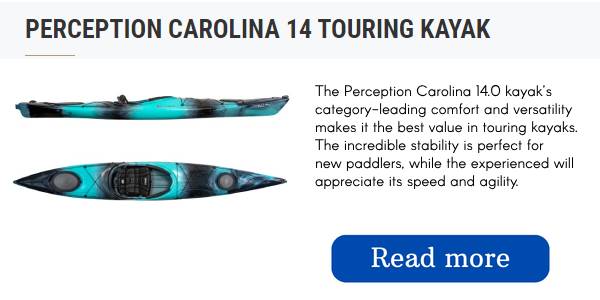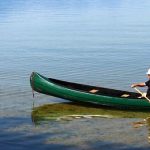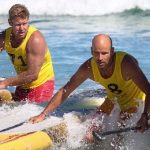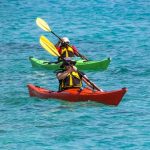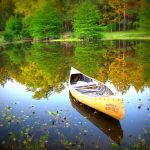You’ve done it. You have determined to advance your canoeing ability by taking an overnight canoe voyage. You have finished going through Basic Basics and you cannot wait to get started on laying out a plan.
But where do you start?
No matter how short or long of a canoe trip you plan, it requires the same amount of preparation. We undoubtedly all fantasize about having a perfect vacation, with great weather and enjoyable days. Be ready for what might come even if you’re just taking a break from your normal routine on the weekend.
Keeping in mind all the specifics can be the distinction between winding up in a dismal heap, with no jacket, in a wet mess of muskeg while it is pouring rain. O evenr concluding the same portage under the same conditions but with a dry raincoat, a grin and the sensation that you are on cloud nine.
Planning A Canoe Trip
Canoeing.com has whatever details you must have to plan your journey, whether you are a part-time explorer or an experienced off-road explorer. Choose a place to visit, map out your journey, and become an expert on canoeing.
It is crucial as a first-time canoe traveler to be sure that all of your needs are met. Seek advice from knowledgeable individuals to make sure that everything is taken care of.
Consulting with one of the knowledgeable outfitters and guides profiled in each region of the Destination Guide is a great way to map out the journey that’s ideal for you.
Make sure to be honest with them about your expertise and they will be a great source of help.
Choosing a Destination
Choosing the correct spot for your canoe outing is essential for it to be a positive experience. Make sure you investigate your destination before choosing it.
Whether it be any place or you absolutely want to go to the Boundary Waters Canoe Area, so that it fits your objectives and your level of expertise. The Canoeing.com Destination Guide has all the information you need, and answering the following questions will help you sift through the options:
You don’t always have to go a long distance in order to enjoy terrific canoe country. The Destination Guide is sorted by state and Canadian province, allowing you to locate canoe country nearby or in a different area.
Length: Think about how much time you have. Are you in search of a brief escape or a park with enough space to stay for seven days or more? The Destination Guide provides maps and direction ideas for choosing canoeing locations.
It is possible to check out the Message Board/Forums and Trip Logs to observe where other people have been canoeing.
The type of landscape affects way more than the scenery of your voyage; it can determine how long it takes to reach your destination, how difficult the journey may be, what kind of weather conditions you will encounter, and even the types of wildlife you will observe.
In comparison to the Brule River in Wisconsin, canoeing in the Boundary Waters Canoe Area Wilderness may necessitate more labor-intensive portaging rather than paddling, but you will have a greater chance of spotting a moose.
It isn’t guaranteed that lake trips will involve carrying canoes and that rivers will be relatively relaxed journeys. Get informed on the geography of a place through a Destination Guide and Trip Logs.
Tip: Think beyond the basics. To find the best time to visit, investigate the season with the most foot traffic, temperature averages, month with the most rain, and peak for mosquitoes. Similarly, things like waterfalls, pictographs and wildflowers that are found in nature can draw you to your desired spot.
Getting Started
The attractiveness of canoeing lies in its simplicity. You will have all that you need with you; it can be perplexing at times but also emancipating, compared to the kind of life we have where we are loaded with amenities.
Preparing early with the appropriate equipment and having knowledge of your path is essential. The restricted amount of space in the canoe or the need to transport it overland limits the amount of supplies that can be taken.
That means that every little thing counts. If you don’t remember to bring something, you won’t have it, and packing the wrong items or unpalatable food can make your journey very unpleasant.
If you have never travelled before, it is a good idea to get help from a tour operator to set up your journey or you could even join a group with a tour guide.
Gaining knowledge from knowledgeable kayakers is an excellent method for constructing your own record of kayaking and acquiring the methods of the discipline so that eventually you will feel confident going out by yourself.
Many wilderness and canoeing areas have a considerable amount of outfitters, vendors and instructors in the vicinity. Examine the consultants and leaders noted in each area of the Destination Guide to gain knowledge from the professionals and take advantage of their expertise.
Rules & Regulations
You should be aware of the laws and guidelines for wilderness areas and parks before organizing your journey. Having an experienced guide who is familiar with the place you are visiting can assist you in taking care of the details.
You can locate a great deal of info concerning canoeing on Canoeing.com.
Parks may necessitate permits and/or payments to get in and restrict the quantity of permits provided each season as well as the amount of individuals or boats in a team. You can find the permit information for each destination in the Destination Guide.
One does not have to gain experience over a long period of time to unlock the mysteries of an area suitable for canoeing; tips and guidance for canoeing a specific location can be obtained without delay. Maximize your experience by inquiring and preparing in advance. Why learn everything the hard way?
- Use the maps and routes section of the Destination Guide to find out what map is best suited for the region.
- Visit the Rendezvous and read a few Trip Logs to learn useful route planning information:
- How far campers typically travel in one day and where the high-use areas are
- Whether or not there are designated campsites; if you choose them as you go or select them when you get your permit; whether the number of nights you can stay in one spot is limited
- Food storage or campsite set-up guidelines
- Campfire and cooking regulations
Before setting out on your journey, you should take some time to read up on the trail and get advice from experienced canoeists. Pick something out of the Books & Media section of our list to begin.
What to Pack for a Canoe Trip
You don’t require the most costly or most luxurious equipment to enjoy a memorable trip, however it is vital that you equip yourself with a waterproof tent, a durable raincoat, an ergonomic canoe paddle and a well stocked first aid kit. For advisement on what particular gear you should choose, please look at the Gear Guide.
If you are someone who actively pursues good deals, you can find the items you desire of superior quality at second-hand shops, thrift stores and events where people exchange outdoor equipment.
If you’re new to canoeing and camping, you might opt for hiring equipment from a outfitter or tour guide until you decide if you intend to stay with this type of trip.
Have a look at our helpful Trip Planning Guide for packing essentials and other related information.
Canoe Trip Gear Checklist
The following equipment is useful for your excursion:
a canoe, canoe chairs, canoe kit (bowline, tiedown line, anchor bag), extra rope, personal flotation devices (PFDs)/life jackets, paddles (plus a spare paddle), thwart/bow bags, food packs (with rope and pulley), portage packs, tents, tarps/ground cloths, a tested campstove, a camp saw/hatchet, a collapsible water container, cooking pots/pans/coffee pot, cooking utensils, cups, silverware, plates, extra trash bags/baggies, and a fillet knife. Additionally, each person should bring a daypack, a sleeping bag in a stuff sack, a sleeping pad, camp shoes, clean clothes for the trip home (in the vehicle), a hat/gloves, a jacket, pants, rain gear, shorts, shirts, socks (preferably wool), a sweater/sweatshirt, a swimsuit, sunglasses, wet shoes, a wide-brimmed hat, books, pencils & paper, bug repellent/headnet, and camera equipment.
How to launch a canoe
Where To Sit In A Canoe
Before hopping on a canoe recklessly, ensure you know the basics, including the location of the bow (front) and stern (back). You should also figure out who’s sitting where.
The simplest way to identify the front of the boat is by taking note of the seating arrangements. The end at the front of the boat, which has the most space between it and the seat, is the bow. If you try to use the back seat as a front seat, you will quickly realize this isn’t possible as there is limited room for your legs.
